About a month ago, we saw the launch of the Intel Xeon E-2300 Series Launched Rocket Lake-E for Entry Servers. Dell EMC now has its lineup of four servers including the tower PowerEdge T150 and T350 and rackmount R250 and R350 servers. The new Rocket Lake-E platform from Intel brings PCIe Gen4 to the entry Xeon server market for the first time, but it is also limited to 8 cores. Still, Intel’s new platform is a big upgrade for the entry market segment, and Dell is taking advantage to roll out a new server line.
Update 2021-10-08: Dell reverted back to STH with updated technical specs we pointed out before publishing so we are updating this piece accordingly.
Dell EMC PowerEdge Intel Xeon E-2300 Servers
We are going to show all four servers in turn starting with the tower servers followed by the rackmount servers.
Dell EMC PowerEdge T150
The Dell EMC PowerEdge T150 is the company’s low-cost tower server designed for edge deployments. Think of these as SMB or branch servers that are relatively low cost (although not to the degree as we saw in the Dell EMC PowerEdge T40 Review) and can be deployed in places that do not have racks.
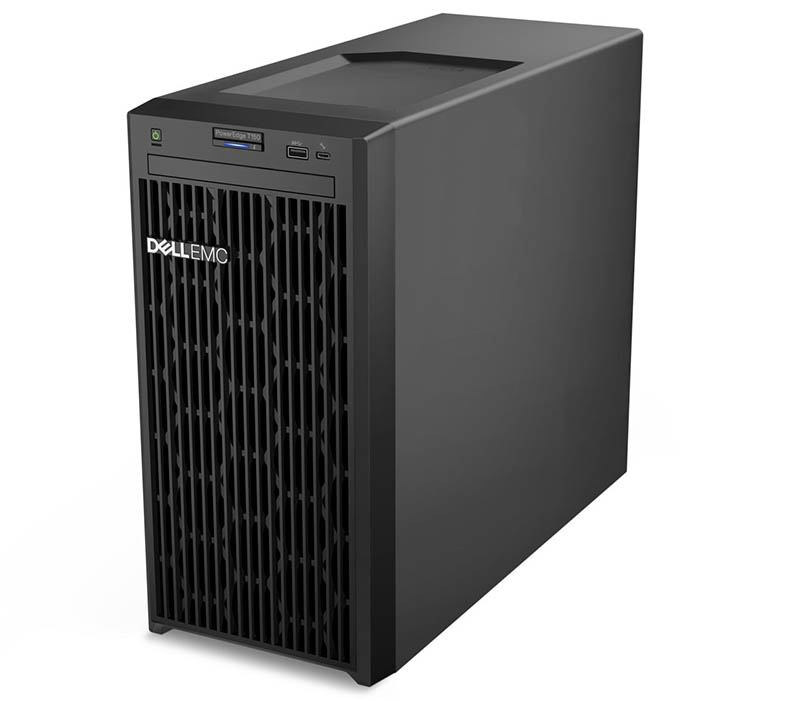
In this segment, we get dual 1GbE LOMs and also only 80Plus Bronze power supplies. This is the heavily cost-optimized solution, so there are trade-offs being made.
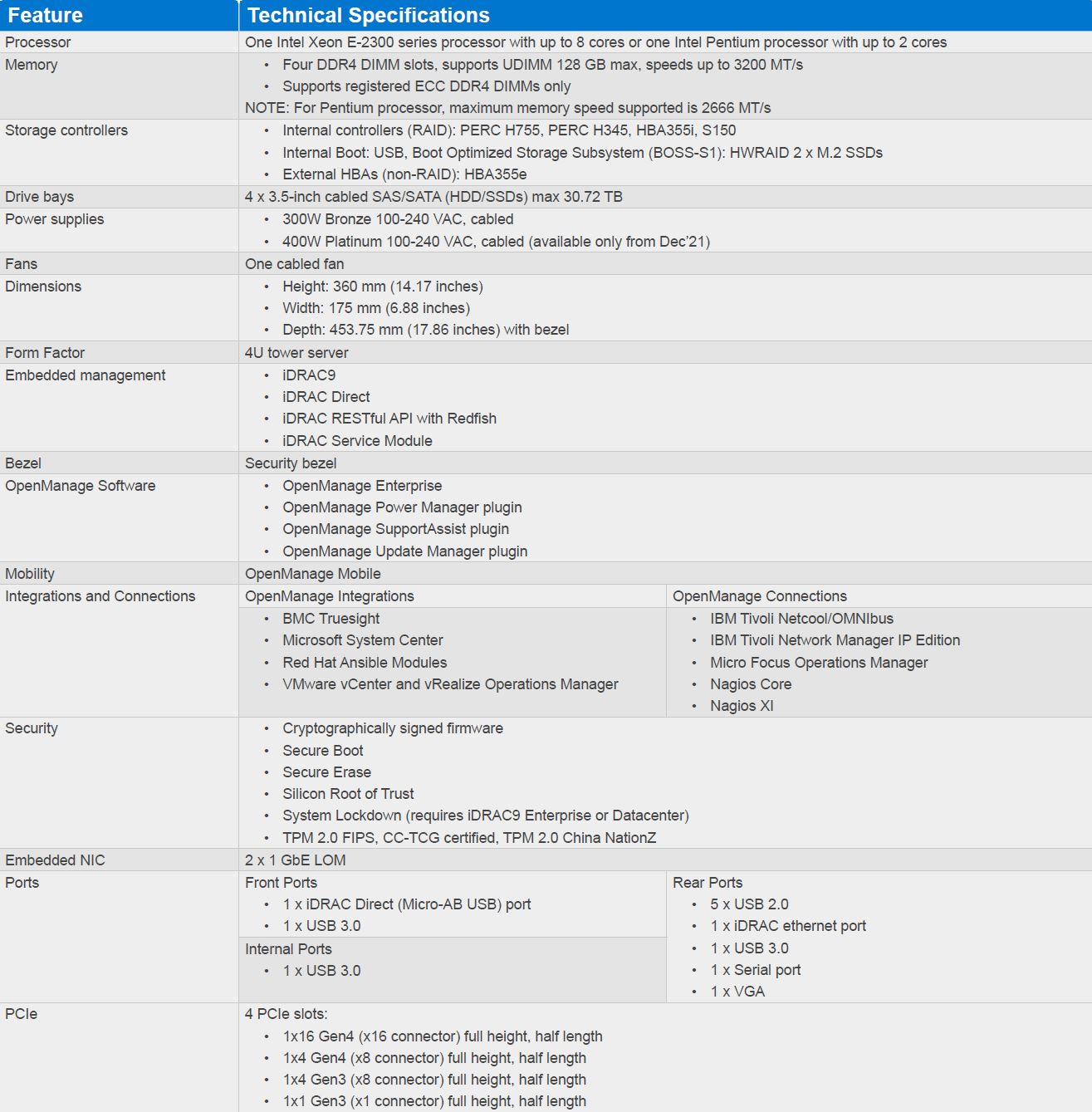
Something that is interesting is that we get two PCIe Gen4 slots and two PCIe Gen3 slots. The Intel Xeon E-2300 series is limited on PCIe lanes, but Dell is exposing them with extra space for larger cards even if they are at lower uplink widths. This is a nice upgrade over what we saw in our Dell EMC PowerEdge T140 review.
Dell EMC PowerEdge T350
Moving slightly up-market, we have the Dell EMC PowerEdge T350. As the numerical designation suggests, this is a higher-end solution.
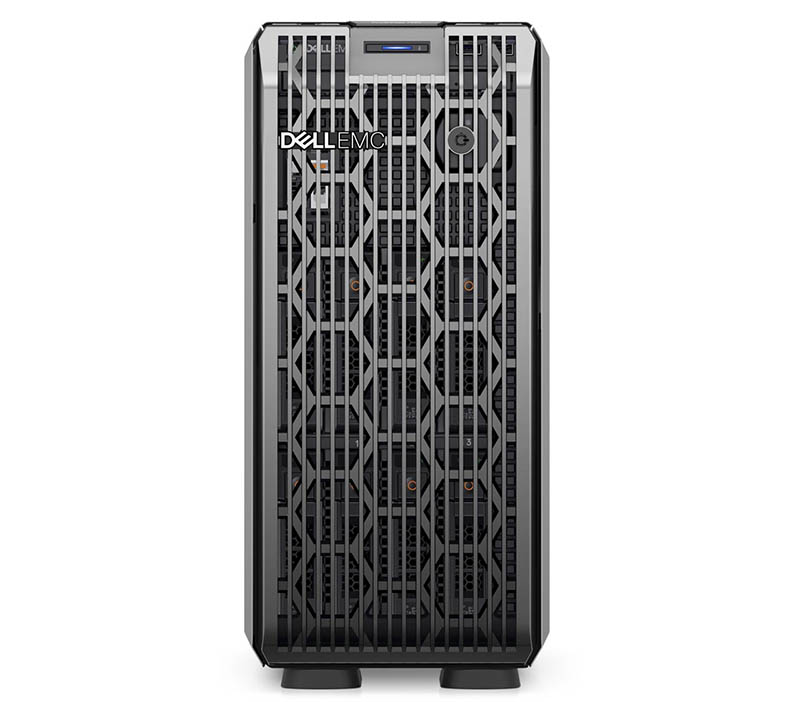
Here we see the power supply situation get a bit better with Platinum and DC options as well as 100-240V PSUs. This is also a 4.5U server while the T150 is listed as a 4U server. There are other big changes like we get up to 8x 3.5″ front bays in the T350 while the T150 uses four cabled bays.
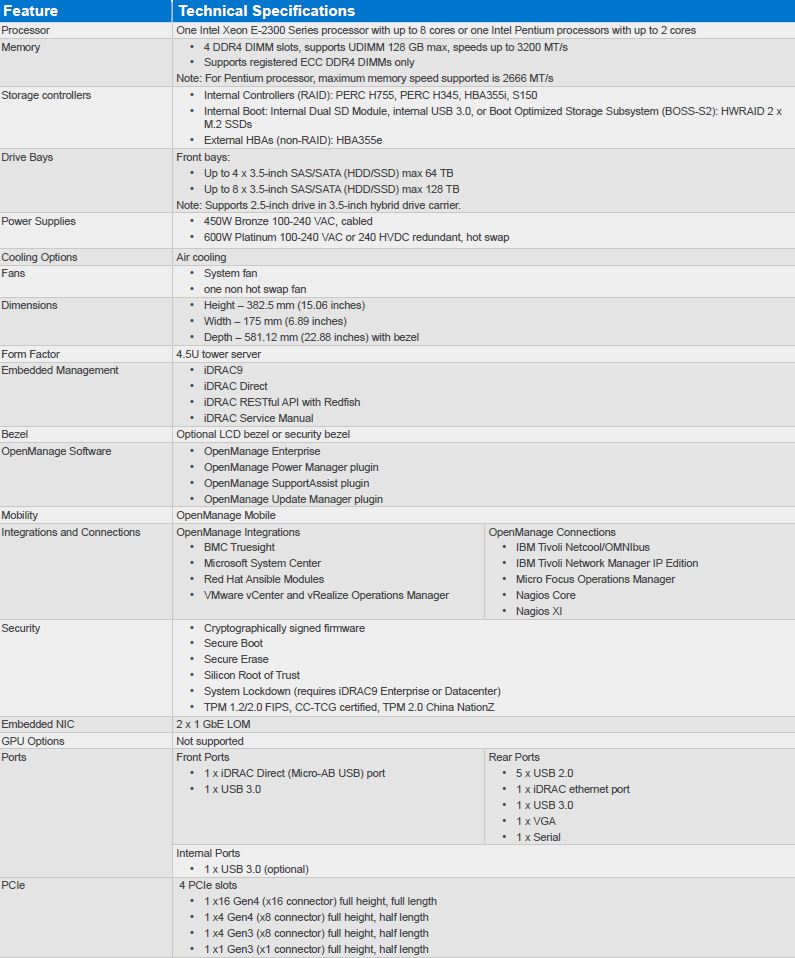
There are other small but nice changes compared to our Dell EMC PowerEdge T340 review.
Dell EMC PowerEdge R250
The Dell EMC PowerEdge R250 is the rackmount Xeon E-2300 series starting point. It uses 3.5″ drive bays which is an important feature.

In the R250 we see one cost-saving measure is that the power supply is cabled and non-redundant/ hot-swappable. The R250 tends to be used in lower-cost hosting applications where that is a common configuration.
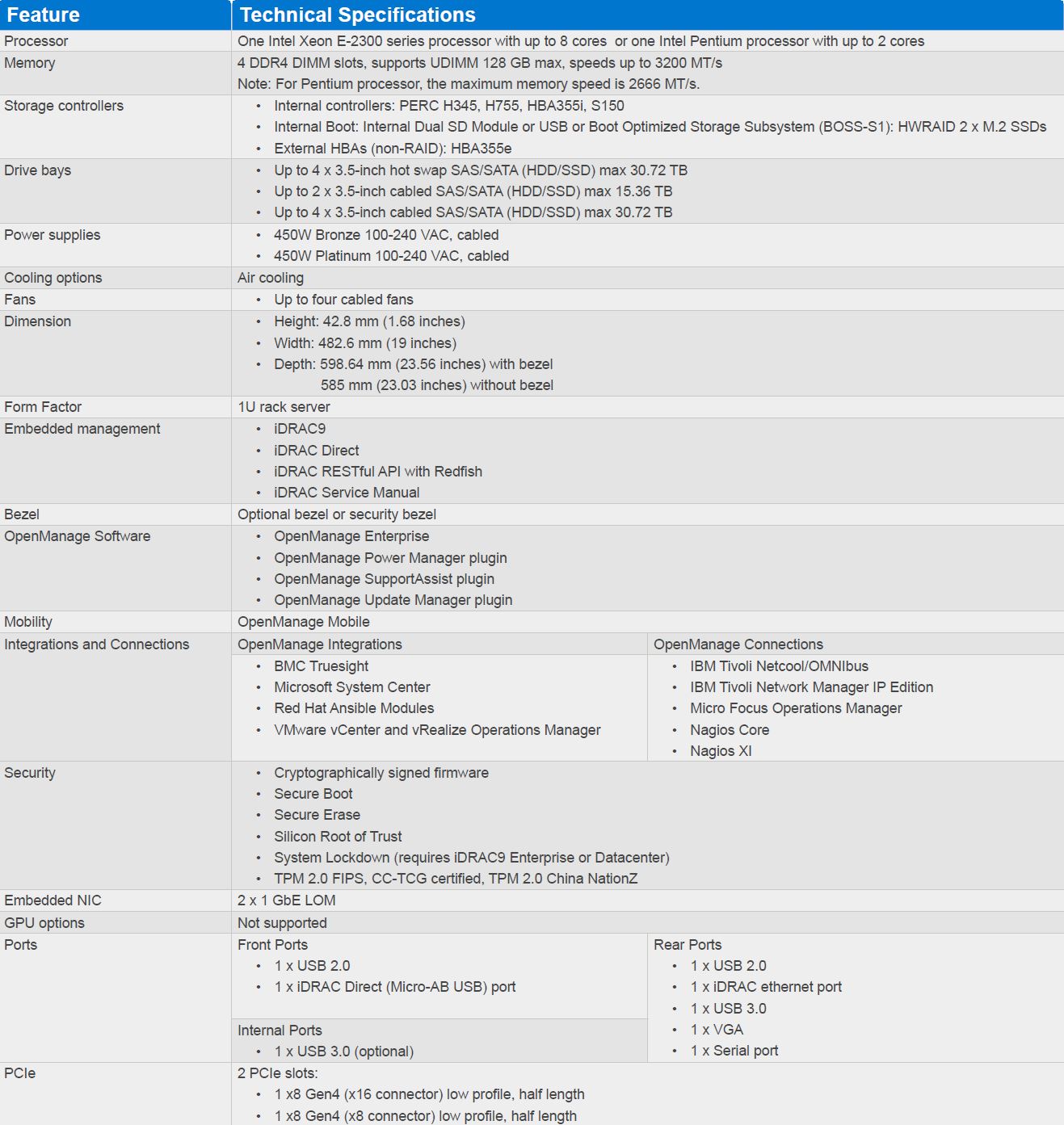
We reviewed the previous version, the Dell EMC PowerEdge R240 and found it was a solid offering. Since this is the pre-Alder Lake mainstream Intel core line, the big change again is the PCIe Gen4 inclusion here.
Dell EMC PowerEdge R350
The Dell EMC PowerEdge R350 is the higher-end version of the R250. We get a number of features such as the ability to support 8x 2.5″ drives. One feature we do not get in this class is the ability to support NVMe SSDs in these 2.5″ bays so these are SAS/ SATA-only. Part of that is likely due to the Xeon E-2300’s limitations.

The PowerEdge R350 has an 80Plus Platinum 100-240V PSU configuration. These are redundant power supplies which is another area where these are upgraded.
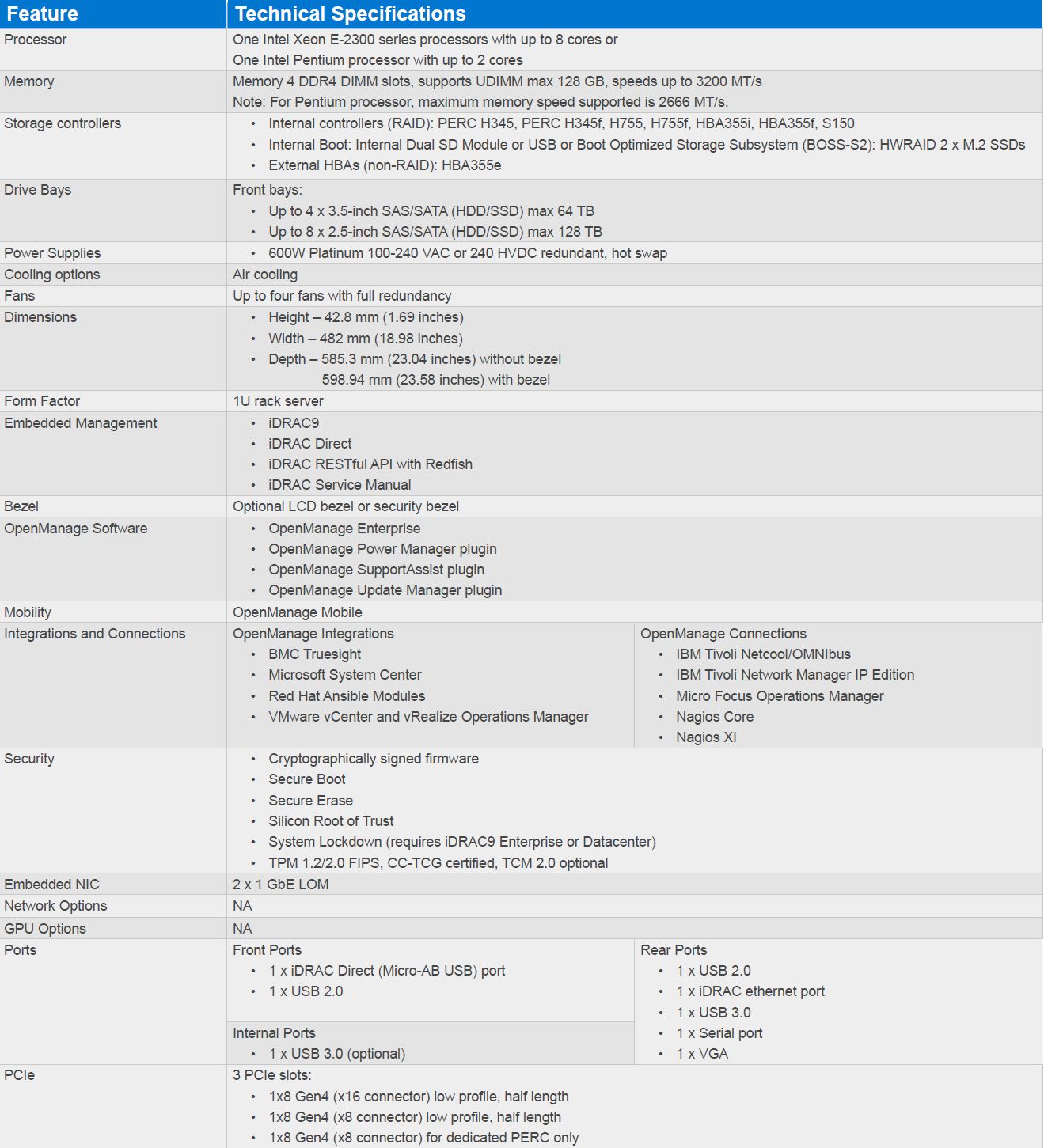
For many, the additional PCIe Gen4 slots for higher speed networking or other accelerators may be a very interesting addition compared to our Dell EMC PowerEdge R340 Review.
Final Words
These are considerably behind some other companies as we already have Xeon E-2300 servers in the lab for testing. The good news is that when we reviewed the Dell EMC PowerEdge T140, PowerEdge T340, PowerEdge R240, and PowerEdge R340 they were all actually well-provisioned servers. At some point, we will likely look at the new line from Dell, but there is a lot that we are covering soon, specifically on the networking side for Dell.
In the meantime, we will be publishing our first Intel Xeon E-2300 server reviews in the coming days.

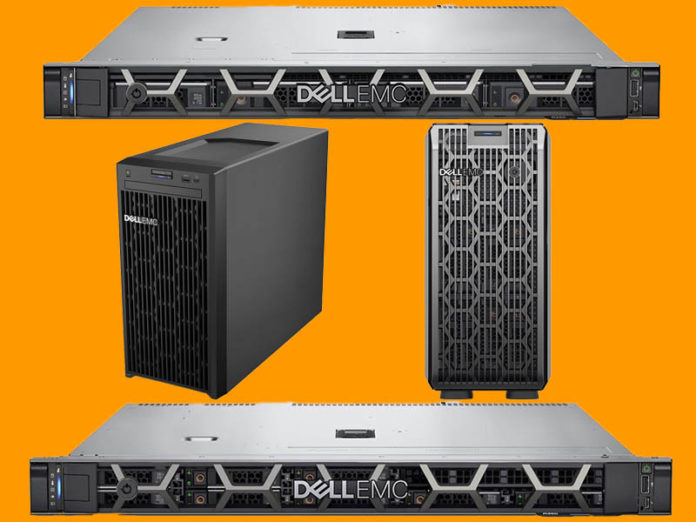



Trusting a dedicated management port is like trusting there no way to get from inside the server to the BMC. Always remember to secure the management net. I.e. with access lists in the switch or using a private vlan, so the BMC port only can talk to the management hosts and not other BMC ports.
With such precautions a shared port is really not a problem, given you trust that management hosts are closed down tight.
Most IPMI is on a separate dedicated switch, completely separate from LAN or WAN, and is dedicated specifically to IPMI management.